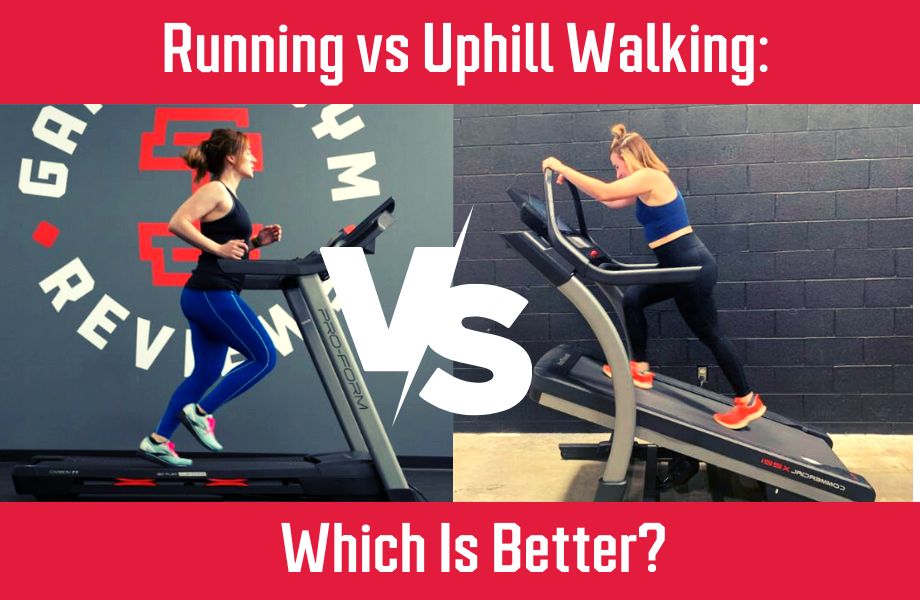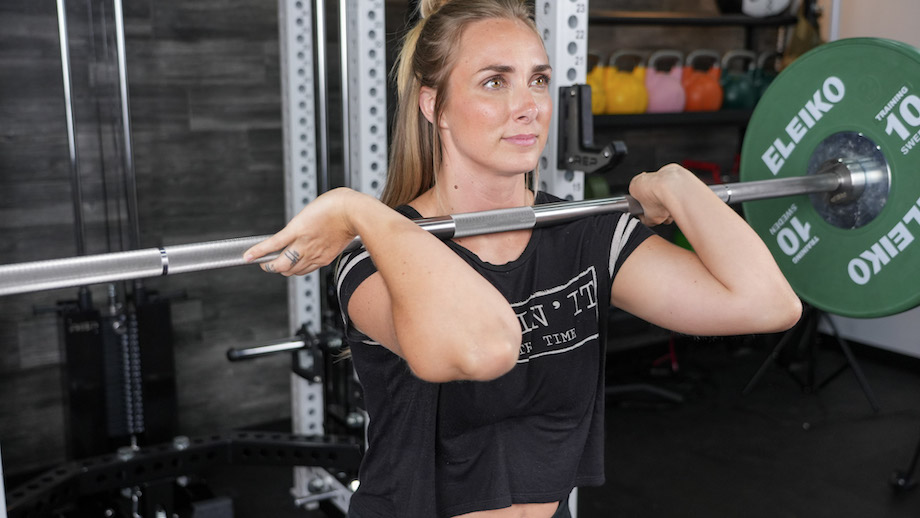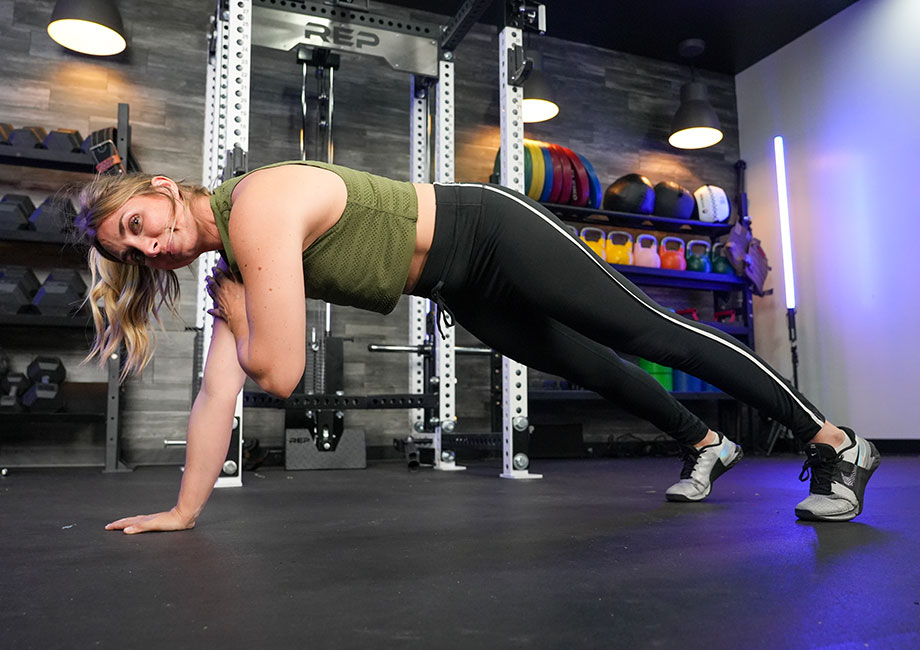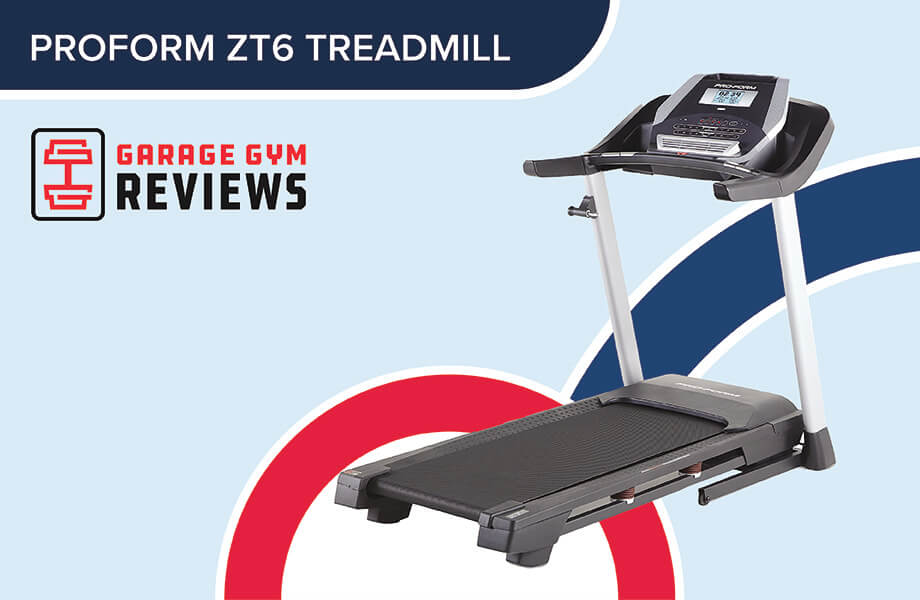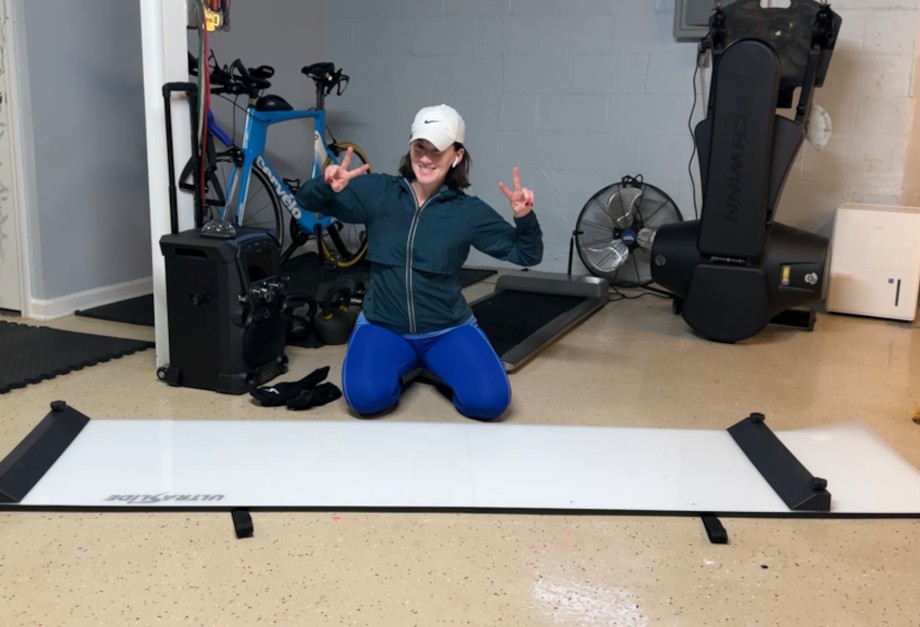As a certified personal trainer (CPT), I get a lot of questions about cardio. People ask which type of cardio is best for burning the most calories, which is best for fat loss, and which is best for improving your cardiovascular fitness. Usually, the answer is running, and most don’t like it. It reminds them of punishing running workouts that result in dry heaving or utter exhaustion. But then I suggest uphill walking, and their ears perk up.
Here, I’ll explore the pros and cons of uphill walking vs running and which might be better for your individual cardio needs. Either way, you’re going to sweat, but hopefully, you’ll enjoy the journey.
Let’s get moving.
Uphill Walking vs Running: Cardiovascular Fitness
By design, uphill walking and running workouts will contribute to your cardiovascular fitness as you elevate your heart rate and cardiorespiratory levels during sustained physical activity. Running will likely challenge your body more than uphill walking because of the increased pace, but don’t rule out incline walking just yet. Walking on an incline adds resistance to a lower-impact exercise, so while it may be easier on your joints, it’ll still test your aerobic capacity.
Uphill Walking vs Running: Burning Calories
If you’re a 160-pound body weight person walking on an incline1 for one hour, you can expect to burn 440 calories. The same 160-pound person running at six miles an hour for one hour burns 720 calories on flat ground. Therefore, over the same period, running burns a greater amount of calories.
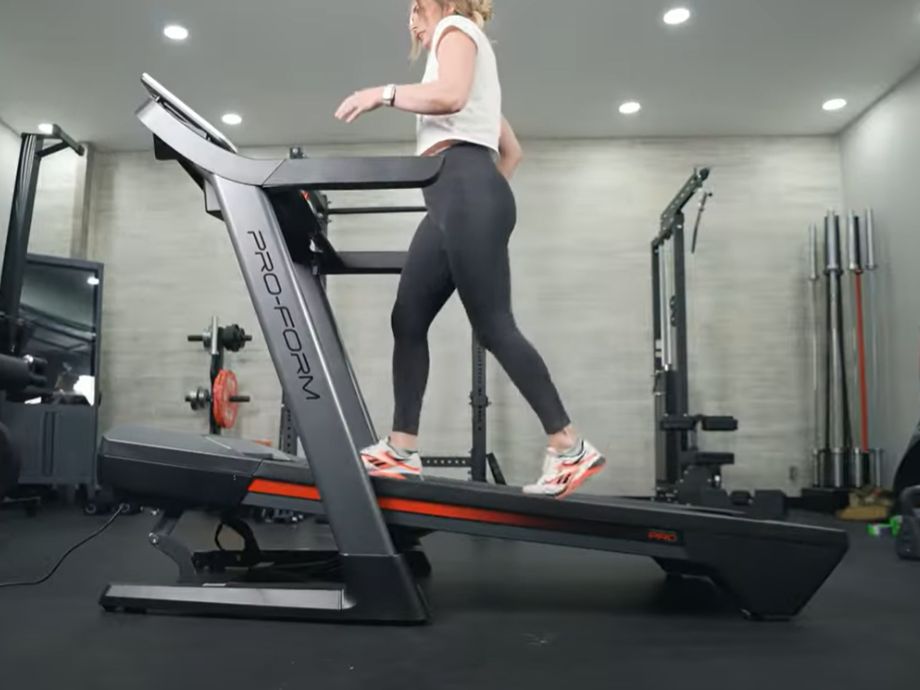
It’s important to note, however, that if you’re going to walk, walking uphill will do more in terms of calorie burn than if you choose flat ground. Studies have shown that a 1% incline increase can help you burn 12% more calories2 compared to walking on level ground. Uphill walking increases your heart rate more than walking on a level surface and is a great aerobic exercise.
A 2013 study3 measured the effects of incline walking and running compared to running on a flat surface. This study found that a 2% or 7% gradient led to an increased heart rate by almost 10 percent. This higher heart rate combined with the demand for oxygen means an increased calorie burn as compared to walking on flat ground.
Uphill Walking vs Running: Joint Impact
Joint impact is not a bad thing. Weight-bearing exercises like uphill walking, treadmill walking, and sprinting help build strong muscles and bones. When your muscle moves, the tendons tug on your bones, and this process helps you remodel bones (otherwise known as Wolff’s Law4).
But when joint pain is an issue, and you still need the cardiovascular benefits of walking or running, then joint impact becomes a concern. When you’re running, you apply more force to the ground, and this means more impact throughout your leg muscles and joints.
When walking, particularly on an incline treadmill or hill, you are applying less force through the ground and therefore encounter less joint impact. Uphill walking shifts more of the emphasis to your bigger muscles of the quads and glutes and less to the hamstrings to help lessen the impact on your weight-bearing joints.
Uphill Walking vs Running: Weight Loss
When weight loss is your goal, the “big rocks” that form the foundation include a calorie deficit, retaining muscle, getting enough sleep, and consuming enough protein. Cardiovascular activities like uphill walking and running are like the cherry on top of a yummy sundae. Cardio workouts can supplement your weight loss but should never take precedence over the big rocks mentioned.
Depending on your intensity and duration, you’ll burn more calories from running than uphill walking. But if you’re unable to run due to injury or your current fitness level, or you simply don’t like running, then uphill walking is a fantastic alternative.
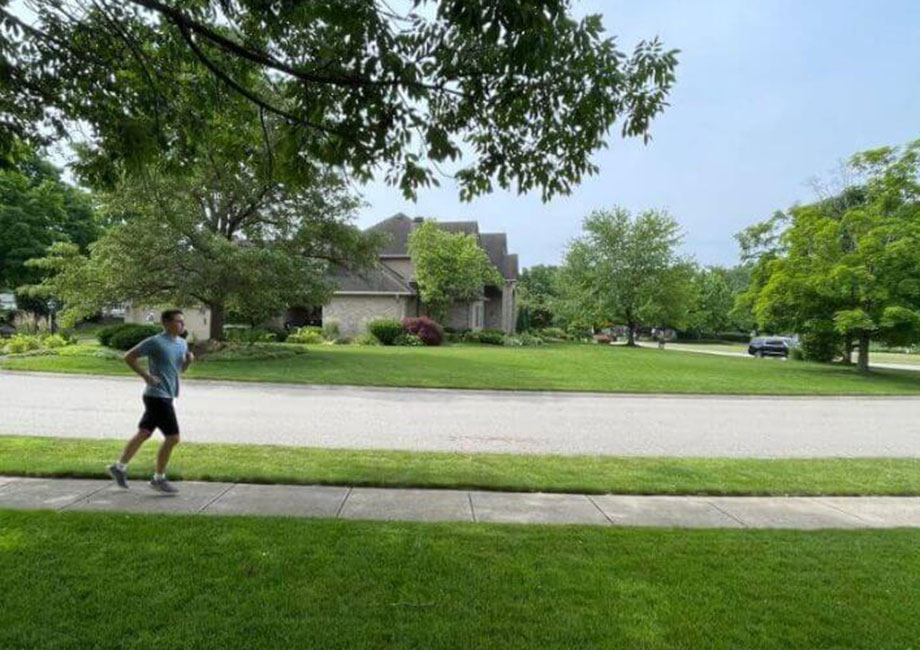
Here’s the thing about cardio: Consistency is king. If you enjoy running, then run. If you don’t enjoy running, uphill walking has the same cardiovascular benefits as running with less joint impact. You’ll get weight loss benefits from both, but only if you do them. So, stick to the mode you enjoy most because consistency is more important.
RELATED: How Much Cardio to Lose Weight?
Uphill Walking vs Running: Building Muscle
Both uphill walking and running are full-body workouts, albeit with a greater emphasis on your lower body. You can get a great muscle-building session by engaging in HIIT running workouts, but uphill walking has the edge here because of the extra resistance placed on your quads, hamstrings, and glutes when walking on an incline.
Pros and Cons of Uphill Walking
If you’re weighing whether you should be participating in uphill walking vs running, here are a few factors to consider regarding walking uphill:
| Pros of Uphill Walking | Cons of Uphill Walking |
| Low-impact activity | May not have access to incline walking courses |
| Strengthens the lower body | Could create additional stress on back muscles |
| May boost mood | Takes longer to burn calories when compared to running |
Pros of Uphill Walking
Low impact: High-impact cardiovascular exercises like running are great but are not for everybody, especially those with joint issues. Walking uphill is less of an issue because you’re applying less force to the ground and up through your joints.
Dr. Luis Javier Peña-Hernández, a lung health specialist and fellow of the American College of Chest Physicians, says, “Brisk walking is an excellent, low-impact form of cardio exercise that has proven health benefits for people of all ages.”
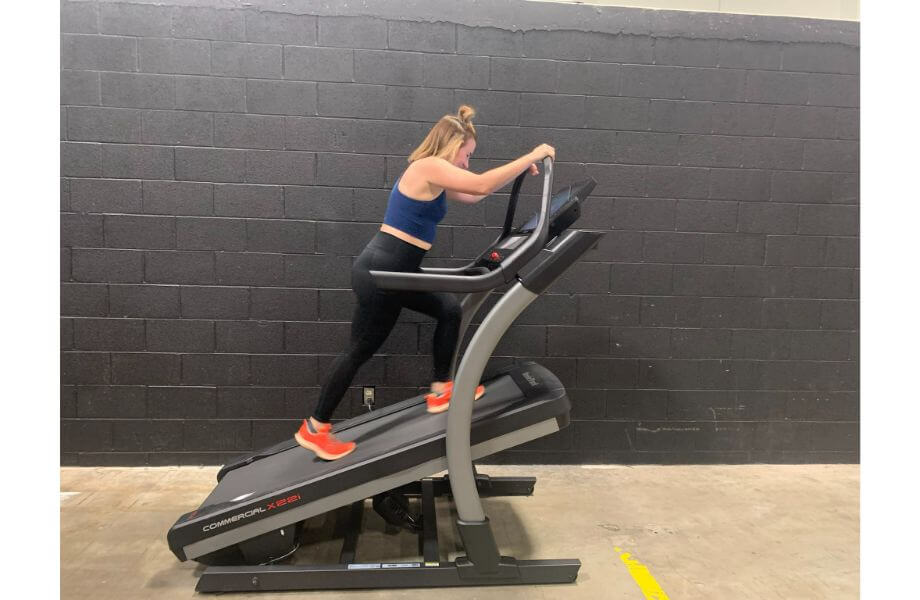
Strengthens lower body: Walking on an incline requires more hip and knee extension and will strengthen your quads and glutes5 more than walking or running on a flat surface would.
May help boost mood: Cardiovascular exercises like uphill walking have been shown to reduce anxiety and depression6. This is due to an exercise-induced increase in blood circulation to the brain. Following on from this, uphill walking can improve mental health by reducing anxiety, depression, and negative moods.
Cons Of Uphill Walking
Accessibility: To walk uphill you need access to a treadmill or have hills around your house to walk up and not everyone has that.
Places additional stress on the calf and back muscles: Switching from a flat surface to an incline puts additional stress on your anterior and posterior calf muscles. If you have any issues here, it is best to avoid uphill walking. Plus, the higher incline puts more stress on your hips and lower back. If you have lower back pain best to avoid uphill walking.
RELATED: Best Calf Compression Sleeves
Takes more time to see results: It takes more time to get a similar calorie burn compared to running. If time is an issue, you may want to stick to running if your joint can handle it.
Pros and Cons of Running
Is running for you? Let’s explore the pros and cons of running.
| Pros of Running | Cons of Running |
| Increased calorie burn | Higher impact on joints |
| Great way to relieve stress | Could put you at higher risk of injury |
| May help increase bone density | Exposure to outdoor elements |
Pros Of Running
Increased calorie burn: Given the same amount of time, running will burn a greater number of calories than flat-surface, uphill, or downhill walking.
Stress reduction: Ever heard of a runner’s high? It’s a flood of mood-boosting endorphins and reduction of the stress hormone cortisol that make you feel alive after a long run. If you’re feeling under the pump, strap on a pair of shoes and go for a run.
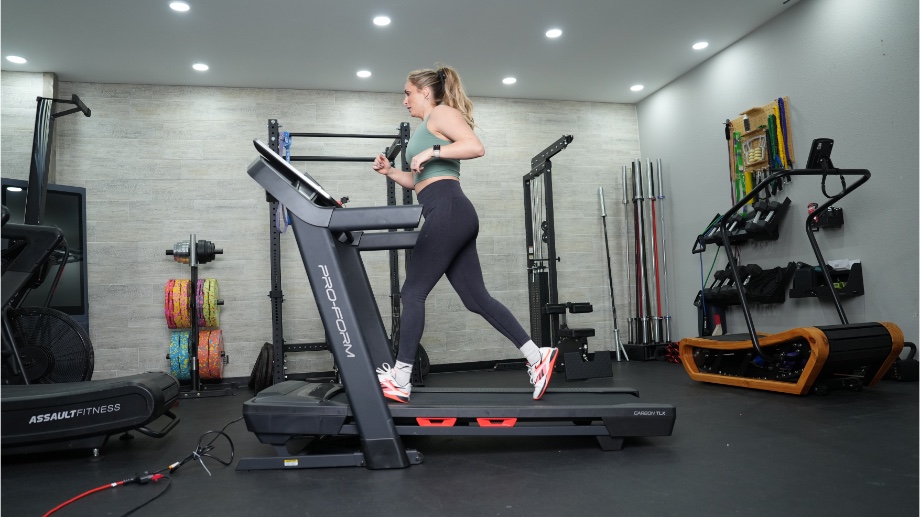
Increased bone density: Sports Health studies7 have suggested higher impact activities like running increase the rate of bone remodeling, making them stronger and more resistant to fractures and breaks.
Cons Of Running
Higher joint impact: A 2016 study8 found that the joint impact from running is higher than from walking, which means there is a lower risk for joint injuries with walking.
Increased injury risk: Due to the higher impact and running being faster than walking, there is a higher risk of injuries as compared to walking and a greater risk of overuse injuries, too.
Increased exposure to the elements: If you’re running outdoors, you are a slave to the weather conditions, and this requires some acclimatization to the hot and cold weather. Running on a treadmill could eliminate this issue, if you have access to one.
How To Get Started
So, how do you get started? The easy answer is to put one foot in front of the other, but we completely understand that cardio fitness isn’t easy for everyone.
Running expert and GGR contributor Amanda Capritto, CPT, CES, CNC, CF-L1, CSNC (with an assist from marathoner and running coach Alysha Flynn of What Runs You) put together a comprehensive guide on How To Start Running covering everything from running form—super important—to essential gear.
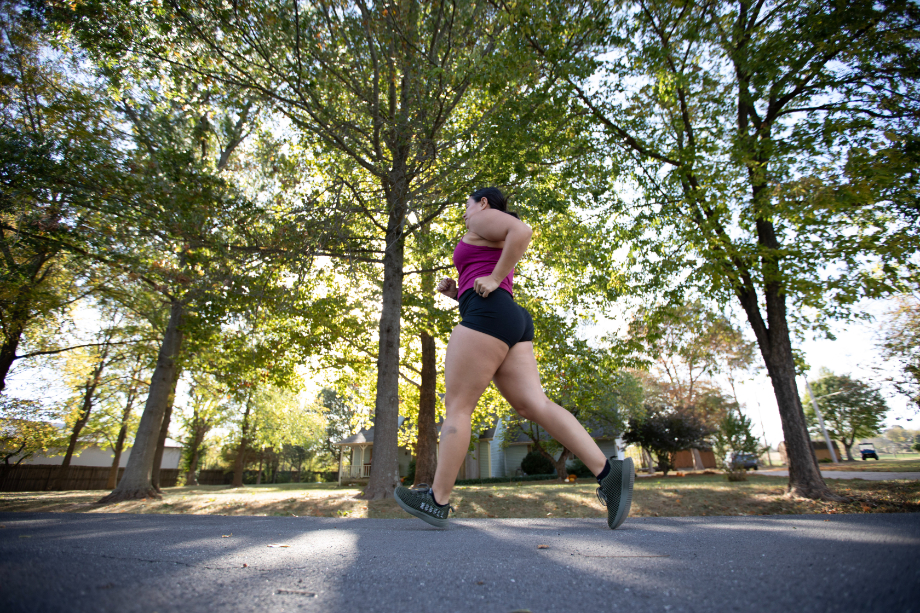
As for uphill walking, the safest way to get started is by using an incline treadmill set from 1% to 5% and slowly ramping up from there as you become acclimated and develop proper walking technique. If you wish to do your uphill walking outdoors, start slow and steady as you navigate the terrain, and keep in mind that what goes up must come down, so be prepared to descend as well.
Potential Risks and Safety Considerations
Uphill walking and running aren’t risk-free as they can be taxing on your joints and (when outside) expose you to the elements. When running or walking outdoors, invest in a decent pair of running or walking shoes that provide enough stability so that your ankles feel secure on sidewalks or hillsides.
If you’re running or hiking during the day, bring water to keep yourself hydrated, and if doing your cardio session in the evening (or in low light), wear reflective running gear to stay visible to others.
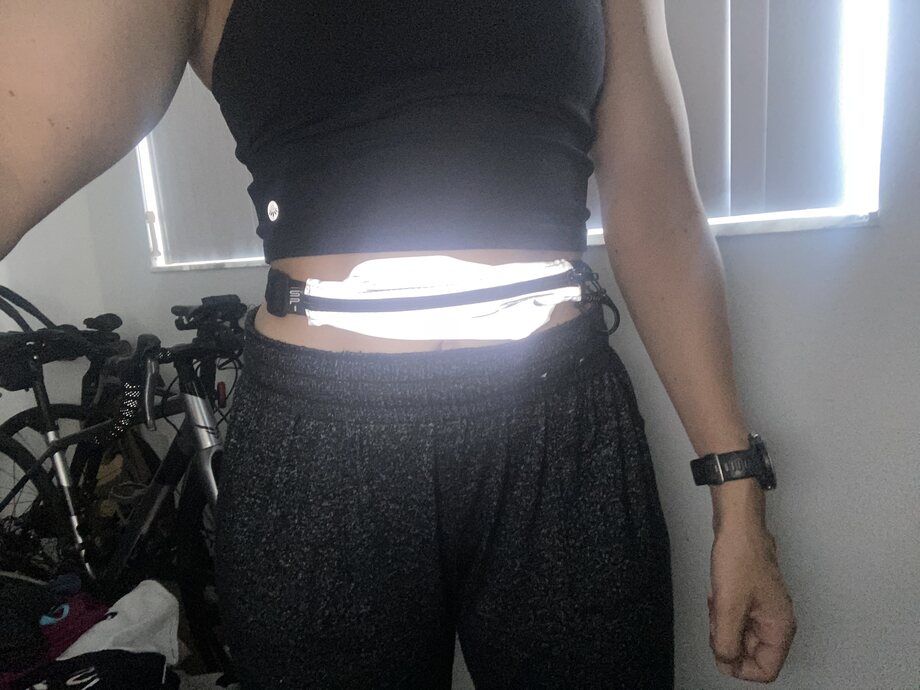
A warm-up or cool-down featuring lower-body stretches and foam rolling is another way to loosen up your muscles before cardio activity and lower the risk of overuse injuries.
RELATED: Best Stretches Before Running
Uphill Walking vs Running: Final Thoughts
When it comes to uphill walking vs running, some considerations make one better than the other for your exercise routine. For example, do you have joint issues? Then uphill walking may be better. Do you lack time and need to run for your sport? Then running will be better for you. Which one you do is a matter of preference, enjoyment, and the one you can stick to long-term.
But why choose? Both are great and can have a place in a well-balanced program.
Uphill Walking vs Running: FAQs
Is uphill walking as good as running?
It can be, but like most things, it depends on your objective. If you need to run for your sport or health and fitness goals, then run. If you don’t like to run and have painful joints, then walking uphill at almost any percent incline is better. Enjoyment and consistency are key.
Is running or walking uphill better for weight loss?
Running is technically better for weight loss because of the increase in calories burned, but not by much. Both have similar health and caloric-burning benefits.
Does walking uphill count as cardio?
Yes, walking uphill does count as cardio. In fact, you could consider uphill walking good cardio as the incline increases your heart rate and oxygen demand more than walking on flat ground.
Is uphill walking good for your booty?
As a matter of fact, yes. The angle you take when walking uphill ups your resistance levels and can directly target the backs of your thighs and (in tandem) your glute muscles.
References
- Ainsworth BE, Haskell WL, Herrmann SD, Meckes N, Bassett DR Jr, Tudor-Locke C, Greer JL, Vezina J, Whitt-Glover MC, Leon AS. 2011 Compendium of Physical Activities: a second update of codes and MET values. Med Sci Sports Exerc. 2011 Aug;43(8):1575-81. doi: 10.1249/MSS.0b013e31821ece12. PMID: 21681120.
- Swain DP, Brawner CA. ACSMs Resource Manual for Guidelines for Exercise Testing and Prescription. Philadelphia: Wolters Kluwer Health/Lippincott Williams & Wilkins; 2014.
- Padulo J, Powell D, Milia R, Ardigò LP. A paradigm of uphill running. PLoS One. 2013 Jul 10;8(7):e69006. doi: 10.1371/journal.pone.0069006. PMID: 23874850; PMCID: PMC3707880.
- Frost HM. Wolff’s Law and bone’s structural adaptations to mechanical usage: an overview for clinicians. Angle Orthod. 1994;64(3):175-88. doi: 10.1043/0003-3219(1994)064<0175:WLABSA>2.0.CO;2. PMID: 8060014.
- Yoshiko, A., Tomita, A., Ando, R. et al. Effects of 10-week walking and walking with home-based resistance training on muscle quality, muscle size, and physical functional tests in healthy older individuals. Eur Rev Aging Phys Act 15, 13 (2018). https://doi.org/10.1186/s11556-018-0201-2
- Sharma A, Madaan V, Petty FD. Exercise for mental health. Prim Care Companion J Clin Psychiatry. 2006;8(2):106. doi: 10.4088/pcc.v08n0208a. PMID: 16862239; PMCID: PMC1470658.
- Manske SL, Lorincz CR, Zernicke RF. Bone health: part 2, physical activity. Sports Health. 2009 Jul;1(4):341-6. doi: 10.1177/1941738109338823. PMID: 23015892; PMCID: PMC3445123.
- Swain, David P.; Kelleran, Kyle J.; Graves, Melani S.; Morrison, Steven. Impact Forces of Walking and Running at the Same Intensity. Journal of Strength and Conditioning Research 30(4):p 1042-1049, April 2016. | DOI: 10.1519/JSC.0000000000001185




